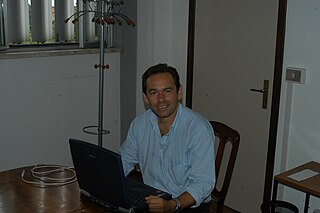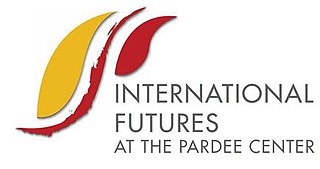The subscription business model is a business model in which a customer must pay a recurring price at regular intervals for access to a product or service. The model was pioneered by publishers of books and periodicals in the 17th century, and is now used by many businesses, websites and even pharmaceutical companies in partnership with the government.

Open-source software (OSS) is computer software that is released under a license in which the copyright holder grants users the rights to use, study, change, and distribute the software and its source code to anyone and for any purpose. Open-source software may be developed in a collaborative, public manner. Open-source software is a prominent example of open collaboration, meaning any capable user is able to participate online in development, making the number of possible contributors indefinite. The ability to examine the code facilitates public trust in the software.
Computational science, also known as scientific computing, technical computing or scientific computation (SC), is a division of science that uses advanced computing capabilities to understand and solve complex physical problems. This includes

Gianni Bellocchi is a researcher in agricultural and related sciences. He is credited with the development of approaches and tools in validation of estimates and measurements. Introduction of fuzzy logic in the context of validation is often considered to be the most significant contribution to the field of model and method validation.

GMS is water modeling application for building and simulating groundwater models from Aquaveo. It features 2D and 3D geostatistics, stratigraphic modeling and a unique conceptual model approach. Currently supported models include MODFLOW, MODPATH, MT3DMS, RT3D, FEMWATER, SEEP2D, and UTEXAS.

The Weather Research and Forecasting (WRF) Model is a numerical weather prediction (NWP) system designed to serve both atmospheric research and operational forecasting needs. NWP refers to the simulation and prediction of the atmosphere with a computer model, and WRF is a set of software for this. WRF features two dynamical (computational) cores, a data assimilation system, and a software architecture allowing for parallel computation and system extensibility. The model serves a wide range of meteorological applications across scales ranging from meters to thousands of kilometers.

Dale Weldeau Jorgenson was the Samuel W. Morris University Professor at Harvard University, teaching in the department of economics and John F. Kennedy School of Government. He served as chairman of the department of economics from 1994 to 1997.

MapWindow GIS is a lightweight open-source GIS (mapping) desktop application and set of programmable mapping components.
Nancy G. Leveson is an American specialist in system and software safety and a Professor of Aeronautics and Astronautics at MIT, United States.

WMS is a watershed computer simulation and modeling software application from Aquaveo. It was originally created in the early 1990s at the Engineering Computer Graphics Laboratory at Brigham Young University.

The iPod Touch is a discontinued line of iOS-based mobile devices designed and marketed by Apple Inc. with a touchscreen-controlled user interface. As with other iPod models, the iPod Touch can be used as a portable media player and a handheld gaming device, but can also be used as a digital camera, a web browser, for email and messaging. It is nearly identical in design to the iPhone, and can run most iPhone third-party apps from the App Store, but it connects to the internet only through Wi-Fi and uses no cellular network data since it lacks a cellular modem.

International Futures (IFs) is a global integrated assessment model designed to help with thinking strategically and systematically about key global systems. It is housed at the Frederick S. Pardee Center for International Futures. Initially created by Barry B. Hughes of the Josef Korbel School of International Studies at the University of Denver in Colorado, the model is free for public use in both its online and downloadable forms.
Specialized wind energy software applications aid in the development and operation of wind farms.

Ecopath with Ecosim (EwE) is a free and open source ecosystem modelling software suite, initially started at NOAA by Jeffrey Polovina, but has since primarily been developed at the formerly UBC Fisheries Centre of the University of British Columbia. In 2007, it was named as one of the ten biggest scientific breakthroughs in NOAA's 200-year history. The NOAA citation states that Ecopath "revolutionized scientists' ability worldwide to understand complex marine ecosystems". Behind this lie more than three decades of development work in association with a thriving network of fisheries scientists such as Villy Christensen, Carl Walters and Daniel Pauly, and software engineers around the world. EwE is funded through projects, user contributions, user support, training courses and co-development collaborations. Per November 2021 there are an estimated 8000+ users across academia, non-government organizations, industry and governments in 150+ countries.
Environmental informatics is the science of information applied to environmental science. As such, it provides the information processing and communication infrastructure to the interdisciplinary field of environmental sciences aiming at data, information and knowledge integration, the application of computational intelligence to environmental data as well as the identification of environmental impacts of information technology. The UK Natural Environment Research Council defines environmental informatics as the "research and system development focusing on the environmental sciences relating to the creation, collection, storage, processing, modelling, interpretation, display and dissemination of data and information." Kostas Karatzas defined environmental informatics as the "creation of a new 'knowledge-paradigm' towards serving environmental management needs." Karatzas argued further that environmental informatics "is an integrator of science, methods and techniques and not just the result of using information and software technology methods and tools for serving environmental engineering needs."
Aquaveo is a modeling software company based in Provo, Utah that develops software used to model and simulate groundwater, watershed, and surface water resources. Its main software products include SMS, GMS, WMS, and Arc Hydro Groundwater.
Modelling frameworks are used in modelling and simulation and can consist of a software infrastructure to develop and run mathematical models. They have provided a substantial step forward in the area of biophysical modelling with respect to monolithic implementations. The separation of algorithms from data, the reusability of I/O procedures and integration services, and the isolation of modelling solutions in discrete units has brought a solid advantage in the development of simulation systems. Modelling frameworks for agriculture have evolved over time, with different approaches and targets
William Swain Cleveland II is an American computer scientist and Professor of Statistics and Professor of Computer Science at Purdue University, known for his work on data visualization, particularly on nonparametric regression and local regression.
Science Publishing Group (SPG) is an open-access publisher of academic journals and books established in 2012. It has an address in New York City but is actually based in Pakistan. The company has been criticized for predatory publishing practices. As of 2019, it publishes 430 journals in various fields.
Stephen Terrence Buckland is a British statistician and professor at the University of St Andrews. He is best known for his work on distance sampling, a widely used technique for estimating the size of animal populations. He has also made significant contributions in the following areas: bootstrap resampling methods; modelling the dynamics of wild animal populations and measuring biodiversity.







